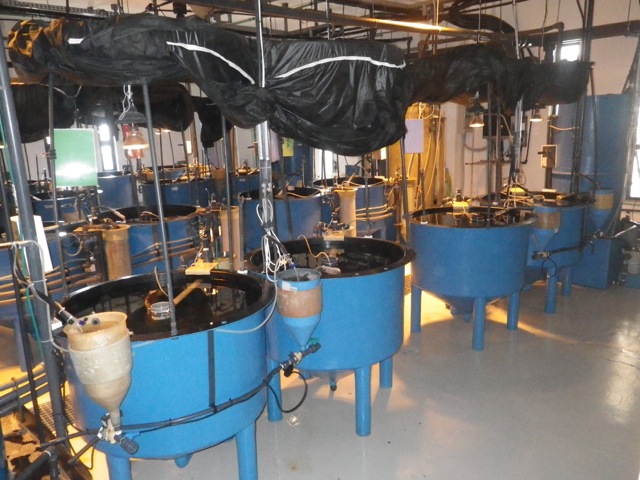
Features
Research
Focus on early rearing in European DIVERSIFY project
October 2, 2014 By Erich Luening
 A five year program aimed at removing bottlenecks for emerging species
A five year program aimed at removing bottlenecks for emerging speciesAs the European Union works to diversify the species of fish farmed in the continent one institute is at the center of research into spawning, selective breeding and larval rearing.
The Institute of Marine Biology, Biotechnology and Aquaculture, Hellenic Centre of Marine Research (HCMR), located in Greece, is the coordinating partner of the European Union (EU), European Commission (EC) DIVERSIFY project, a five-year program aimed at removing bottlenecks for emerging species, producing new products and accessing new markets for European aquaculture.
The project officially kicked off at the HCMR in August.
“We are involved in research on all six species included in the project (meagre, greater amberjack, pike perch, halibut, wreck fish and grey mullet) and in all side scientific disciplines (reproduction & genetics, nutrition, larval husbandry, growout husbandry, fish health and socioeconomics),” Dr. Constantinos Mylonas, aquaculture research director at HCMR, told Hatchery International.
The project will build on recent and current national initiatives for species diversification in aquaculture, in order to overcome the bottlenecks in production of these species.
“For this first year of the project we focus on reproduction and genetics and larval rearing of greater amberjack,” Mylonas said.
The other 38 partners in the project are from Spain, France, Italy, Greece, Israel, Belgium, the Netherlands, Denmark, Norway, the United Kingdom, Germany and Hungary.
“The project DIVERSIFY has a very large hatchery technology component in regards to all six selected species, and it will endeavor to develop optimal protocols for the larval rearing of these new/emerging species, based on their feeding behavior, larval ontogeny, nutrient requirements and fish health,” he explained.
The association of a large number of commercial hatcheries and feed production companies (small and large enterprises) in the consortium will ensure rapid and effective transfer of the technology developed to the European industry, Mylonas claimed.
“Our involvement includes studies of reproductive function and development of spawning induction technologies for four species; development of molecular genetics for selective breeding; larval rearing protocols and the study of ontogeny under different rearing methods; development of feeding methods based on fish behavior; nutritional requirements; identification of fish pathologies and development of treatment methods,” he added.
These new procedures will allow hatcheries to incorporate these new species into their production plans, in an effort to diversify production, says Mylonas.
Research results will be disseminated through planned activities targeted both at the fish farming industry and its associated sectors (processing and retailing), as well as European consumers.
As previously reported in Hatchery International, some of the first spawned eggs from greater amberjack were obtained from the Souda Bay sea cage facilities of the HCMR.
— Erich Luening
Print this page
Advertisement
- Trout caviar a lucrative by-product of Irish hatchery
- Spanish researchers aim to close life cycle on European hake





